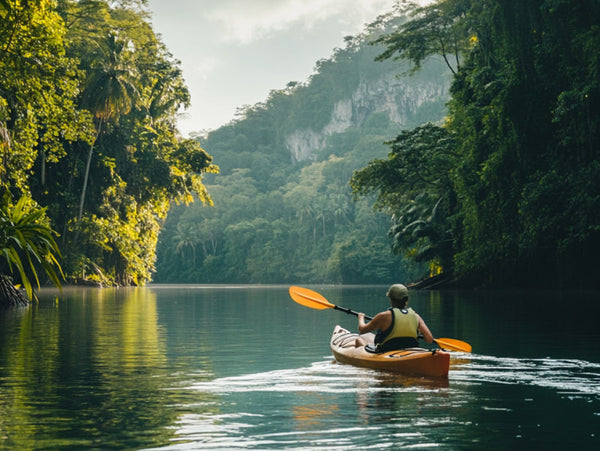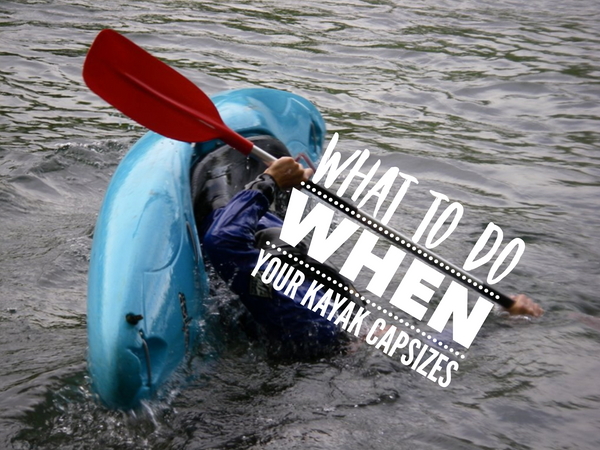Wetsuits vs. Drysuits: Types and When to Use Them

For paddling longer outside of summer or at any chilly destination, you should take measures to avoid hypothermia, a dangerous condition caused by prolonged exposure to cold temperatures. One way is with a wetsuit or drysuit.
Wetsuits are generally made of neoprene and keep you warm by allowing a thin film of water between you and the suit. To accomplish this, they fit tightly and contour to your shape. Drysuits, however, are designed to keep you completely dry. They have seals around the wrists, ankles, and neck to prevent major seepage.
Read on to learn more about which conditions warrant a wetsuit or a drysuit, and how to choose between various designs. Here, we’ll stick to the types most relevant to kayaking and paddleboarding.
When to Wear a Wetsuit or Drysuit
Windy days sap heat more efficiently than still conditions, and everyone reacts to temperature differently. However, water is about 25 times better at drawing heat away from your body than air.
A general rule of thumb is that if the outside air and water temperatures do not add up to 100 degrees Fahrenheit, you’re at risk of hypothermia. For example, if it’s 65 degrees outside, but the lake you want to explore measures less than 35, wear a wetsuit or drysuit and limit your time on the water.
Types of Wetsuits
The Shorty, or Spring Suit: This wetsuit has sleeves ending just above the elbow and legs down to the knee. It lends slightly more protection from the elements and can be perfect for temperate climates in late spring or early fall.
Long Johns, or Farmer John: The Farmer John is sleeveless with full-length legs. This style provides extra warmth for chilly splashes on warm to cool days. It also boasts great range of motion for arms, an important consideration for paddlers.
Full Suit: A full suit has full-length sleeves and legs. It’s best for activities in colder air and water, or even in warmer temperatures when wet for longer periods.
A Note about Thickness and Sizing: Wetsuits come in different thicknesses; thicker wetsuits provide more warmth but less mobility. Manufacturers have their own sizing charts. The key measurements needed are your height and the circumferences of your chest and waist.
When to Use a Drysuit
A drysuit provides greater protection from the elements, as it prevents water from entering. Divers, rescuers, whitewater paddlers, and other high-intensity activities requiring longer exposure usually demand drysuits.
Types of Drysuits
Drysuits come in one or two pieces, but the one-piece is more affordable, easier to slip into, and keeps you drier. The “baggy” style allows for more flexibility, making it the favorite among paddlers. You can also wear extra wool layers underneath.
Other drysuits have special features, like release valves for divers to adjust suit pressure. Hybrid wet-drysuits are often the choice for other water sports, but with the wide range of motion and repetition of paddling, baggy, one-piece drysuits remain the most popular.
With a better understanding of wetsuits and drysuits for kayaking and paddleboarding, you’re ready grab your favorite vessel off the rack and safely take to the water in the off-season… Bring on the solitude!Leave a comment
Comments will be approved before showing up.
Also in Blog

How to Choose the Right Kayak Anchor
Choosing the right kayak anchor can make all the difference when it comes to staying steady on the water. This guide walks you through everything you need to know about selecting the perfect folding kayak anchor

What To Do When Your Kayak Capsizes
Although kayaks are designed for stability no matter the conditions, accidents happen and knowing what to do can help you avoid an unpleasant experience. Preparedness and technique are key components to controlling a sometimes scary situation.


